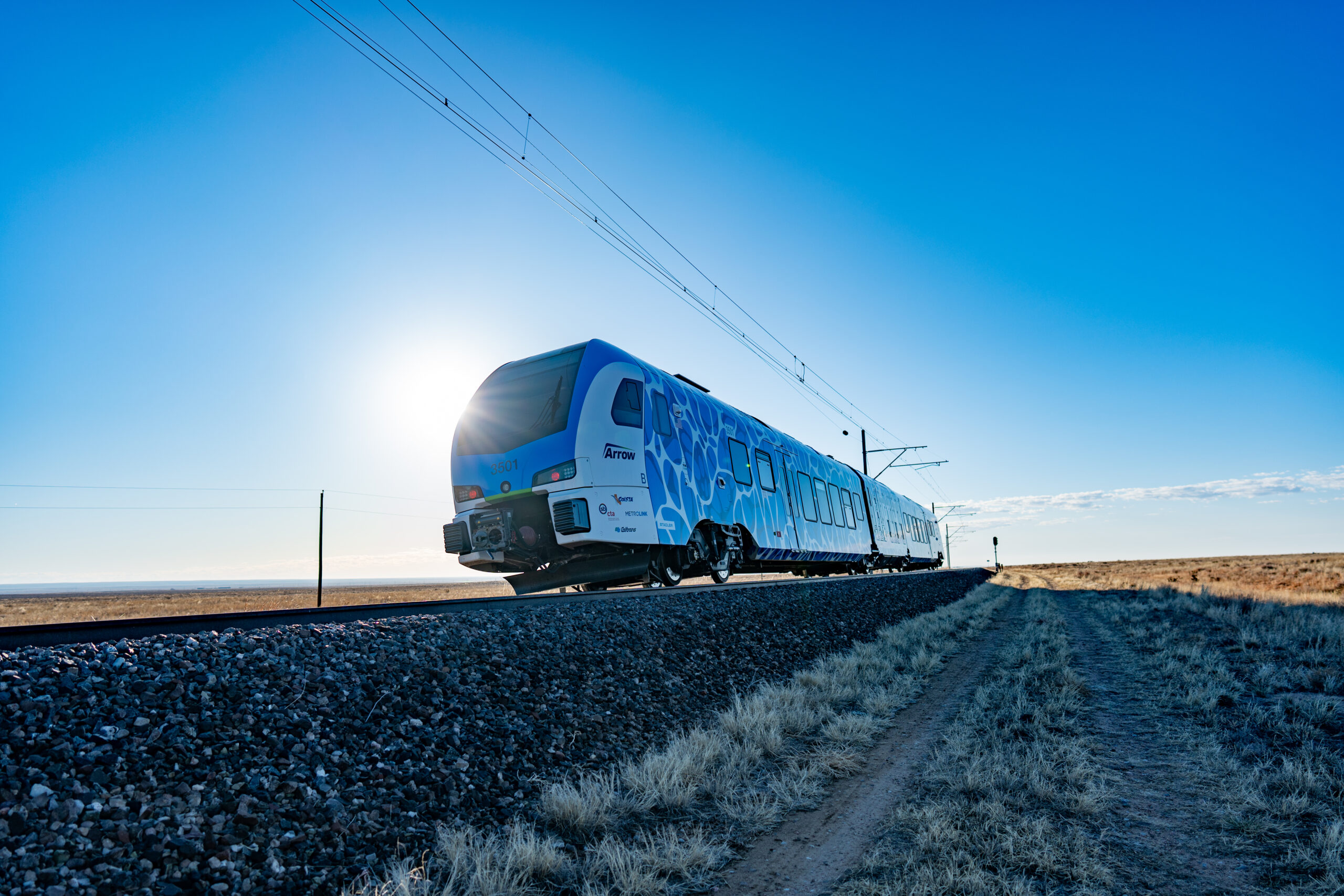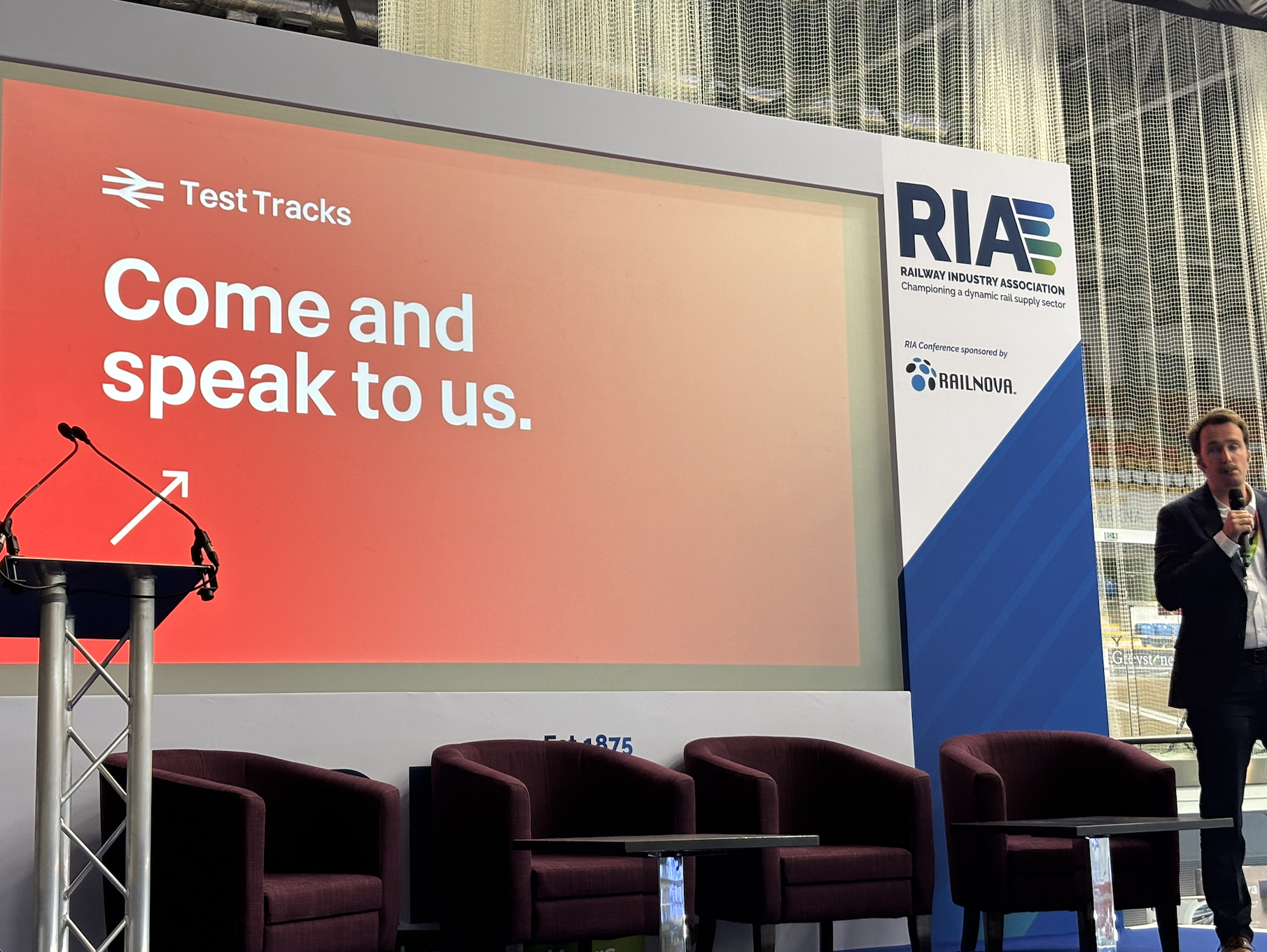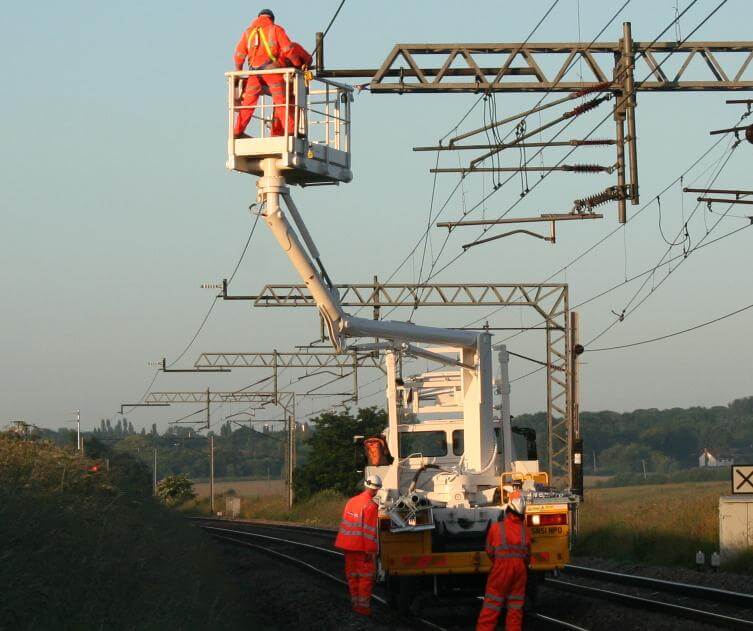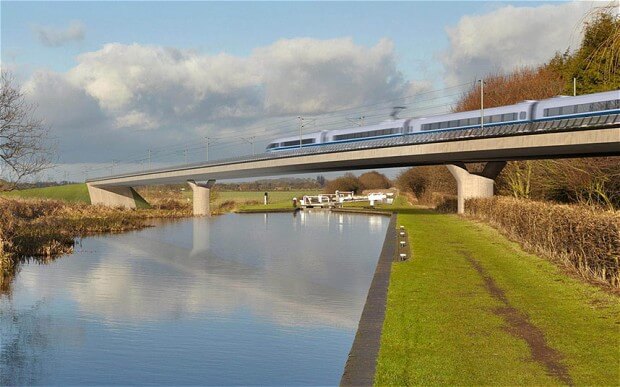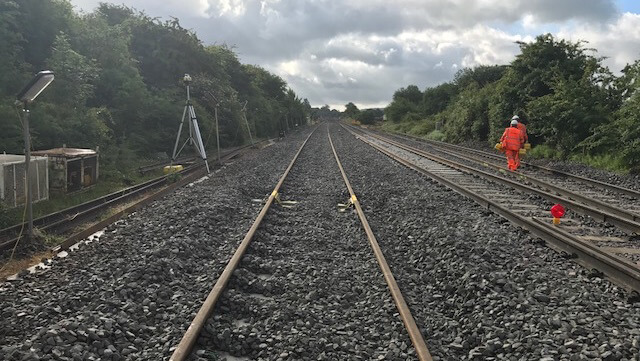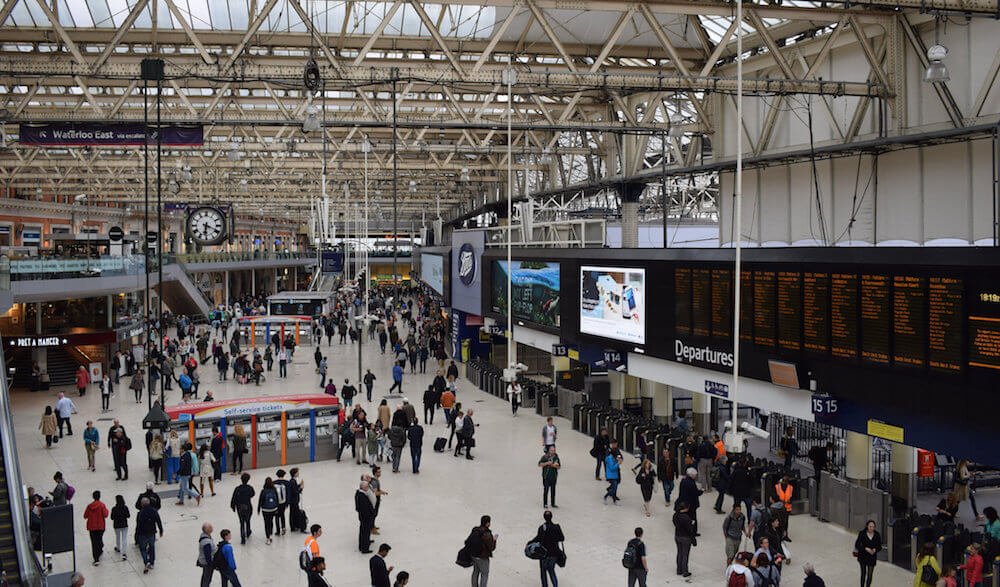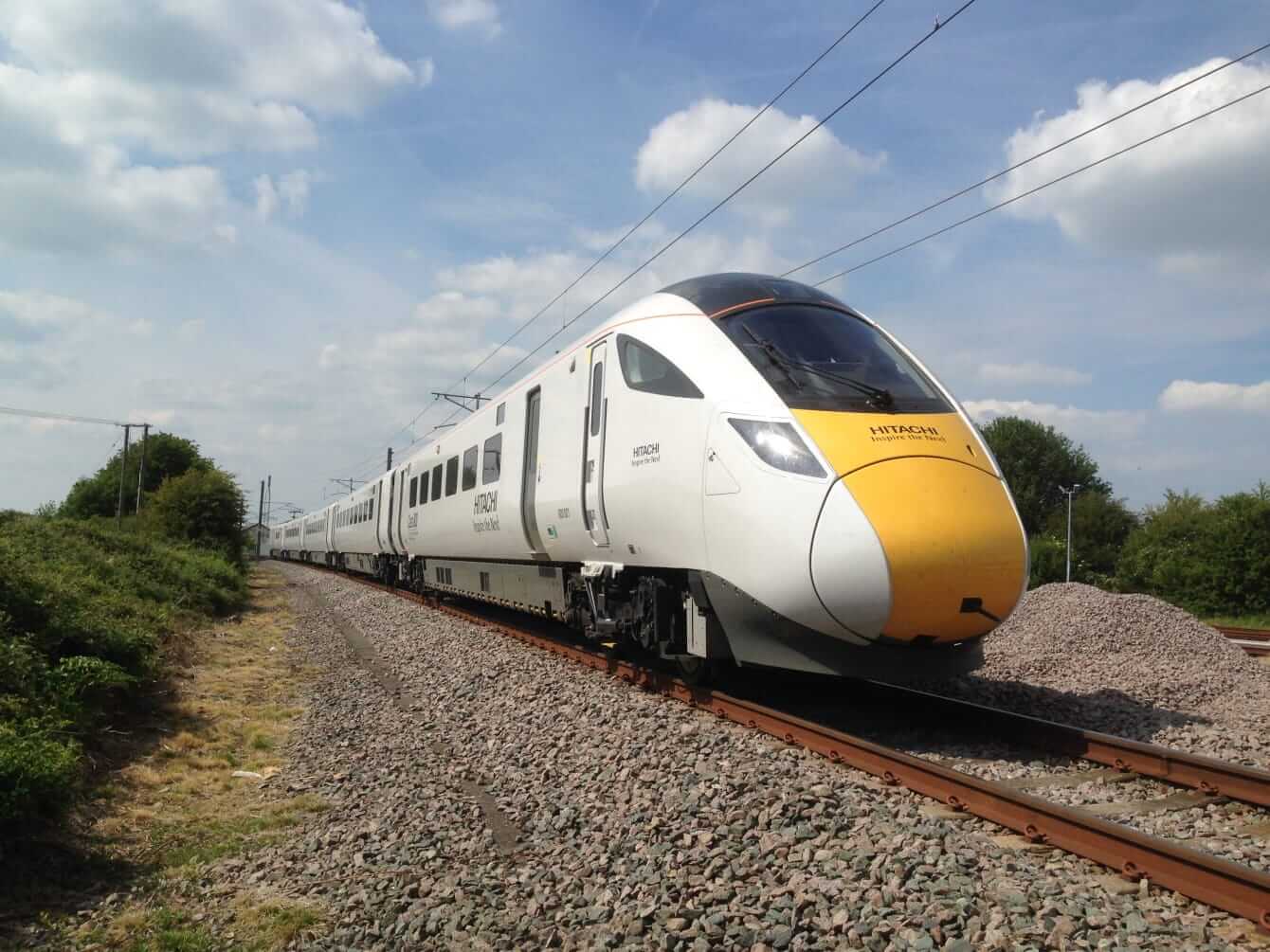
Peter Loosley, Policy Director for the Railway Industry Association (RIA), which represents suppliers based in the UK, tells Railway-News why the future of the industry in that country depends upon cooperation between the British Government and rail companies. This article expands upon the recent appearance of Darren Caplan, Chief Executive of the RIA, before the Transport Select Committee with other representatives of RIA member companies on the 29th of January, 2018. The session was the first of the Committee’s inquiry into rail infrastructure investment, which is examining how our rail network is funded and what can be done to improve the current system.
The Rail Funding Shortfall in the UK
During the session, it was clear that the supply chain’s biggest concern was the ‘boom and bust’ funding cycle of Control Periods (CP) and particularly around renewals. Since the beginning of the CP regime (a huge and very welcome improvement over the old British Rail annual funding round) there has been a workload hiatus during the transition between one CP and the next – meaning suppliers are required to expand their capacity in the early years of the CP before seeing a sudden drop-off in workload towards the end. This is extremely inefficient and threatens investment, jobs and in some cases the ability of companies, particularly SMEs and specialist companies, to survive.
The Committee session provided a valuable opportunity for MPs to hear first-hand the problems this has been causing. Peter Roberts of Signal House Group, and Pino De Rosa of Bridgeway Consulting, both spoke about the difficulties SMEs face when dealing with this stop-start approach to rail funding, particularly in regards to recruitment and skills retention. Mark Bullock from Balfour Beatty, a major multinational company, spoke about the absurd problem of trying to secure skilled workers during the ‘boom’ periods and then having to let them go during the ‘bust’.
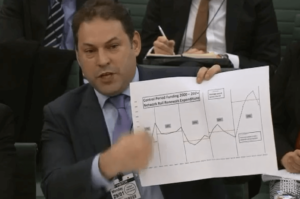
The problem has been particularly acute during the final 18 months of CP5 when RIA has been campaigning around the drastic reduction in renewals volumes; this has resulted in Network Rail providing an additional £200 million for renewals from their existing overall CP5 funding envelope to help bridge the identified £500 million shortfall. Although we were disappointed not to secure the full £500 million, the reallocated money will go some way to protect the industry and make the downturn in renewals volumes less drastic than it otherwise would have been.
The RIA’s Recommendations for the Future
As we approach the end of CP5, it is a good time to reflect on whether we are funding our railways in the best possible way. As the graph below – which Darren held up to Committee members – shows the rail supply chain suffers from this feast and famine approach to funding every CP, and is currently facing a trough in work, when CP6 is expected to will bring a considerable hike in activity.
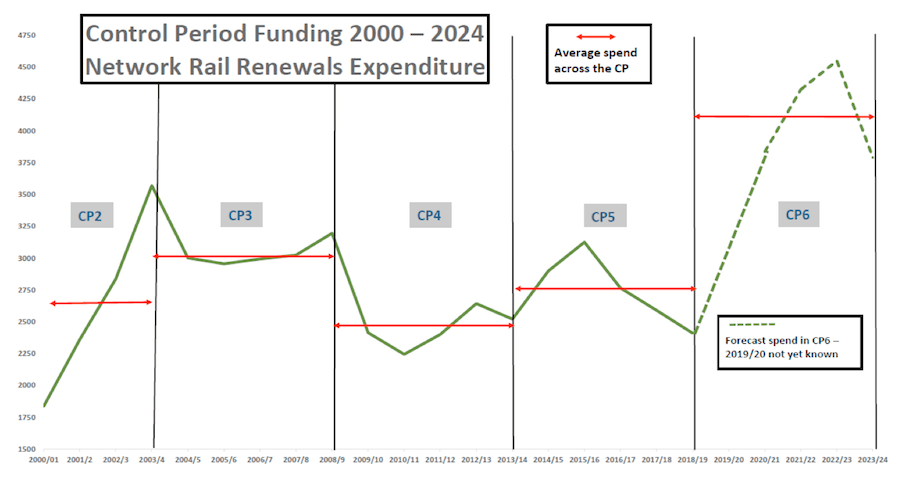
RIA has therefore asked the Transport Select Committee to assist in bringing the industry together – Government, Network Rail, the Office of Rail and Road, the Department for Transport, suppliers and other key rail organisations – to plan how renewals funding during Control Periods can be smoothed to ensure greater consistency and efficiency.
In our written evidence, we provided a number of possible ‘scenarios for change’ to improve the CP structure. We need to be clear – we do not want a major overhaul of the Control Period system, or to revert back to annualised budgets, as was the case under British Rail. However, we do believe changes can be made to smooth out renewals workbanks. These scenarios are:
- A rolling five-year programme with no start/stop date with regular reviews (there is however a risk here of slipping back into an annual budget review which we most certainly do not want)
- Longer Control Periods of, say, 7-10 years (this would provide a longer period of stability within the core of the CP but is really treating the symptoms rather than the cause); and
- A baseline of work and funding to be identified early during CP negotiations and well in advance of the ORR Final Determination.
There are positive and negative aspects of all three scenarios, as well as the examples proposed in the evidence submitted by other organisations.
We are keen to explore with the wider industry which option (and there may well be others) would smooth the renewals work bank pipeline most effectively. We hope that the industry will take up our call and come together to resolve this issue.
You can read RIA’s evidence to the Transport Select Committee here.
FOR ALL THE LATEST INFORMATION, NEWS, IMAGES, VIDEOS AND ARTICLES ON ALL ASPECTS OF RAILWAY SERVICES, PLEASE CLICK HERE.

















